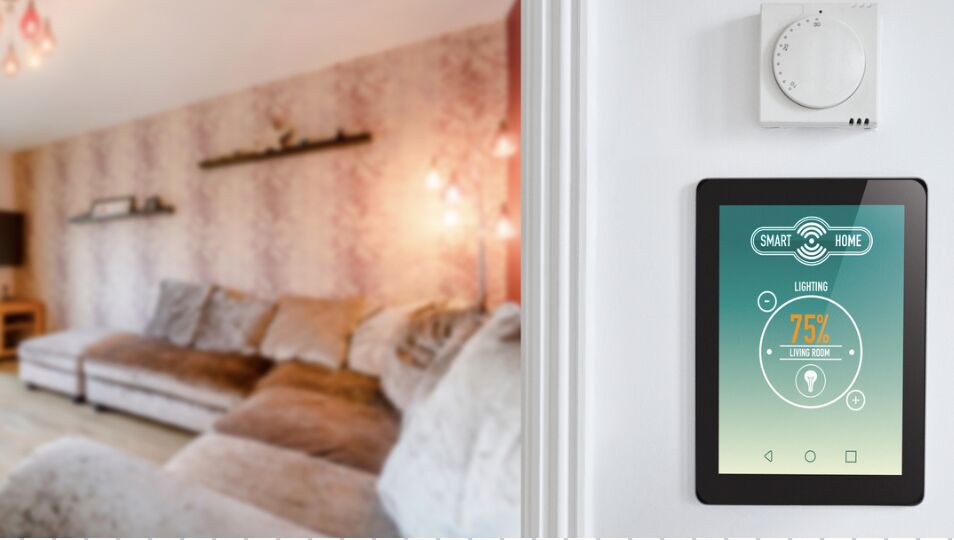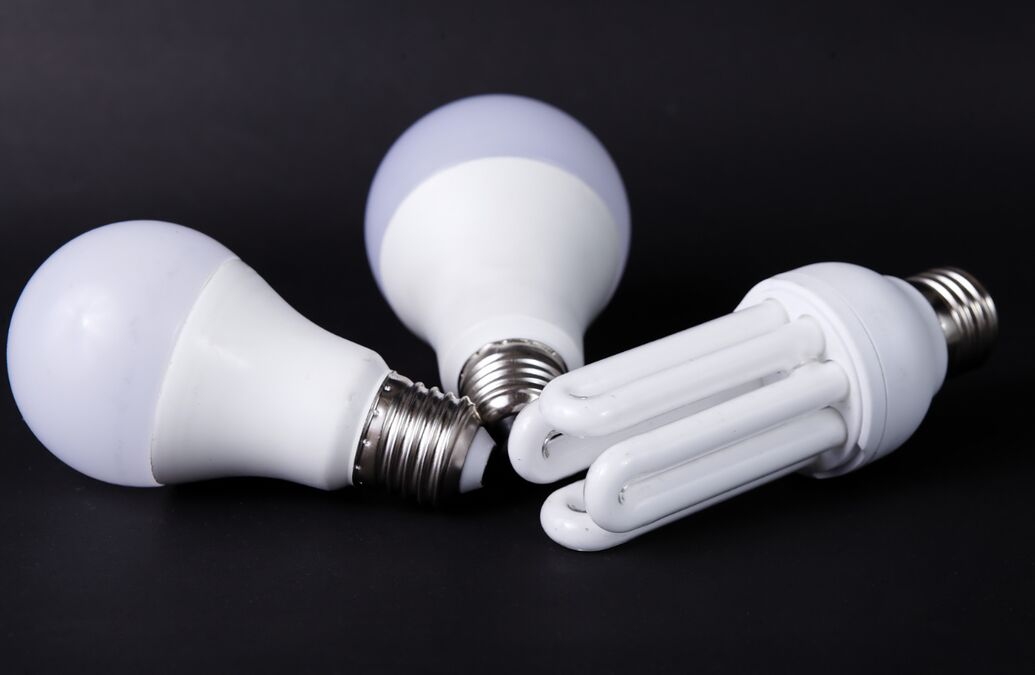
Book your free smart home consultation today
Find out more
Book your free smart home consultation today
Find out moreIf you want to upgrade your home automation, smart lights are a great place to start. Smart bulbs and smart lighting systems will allow you to automate your lighting, control it remotely, control your lights with voice commands, or create lighting moods for different purposes.
Smart lighting is not only great for easier control, but it can also help you to save money on your energy bills. You can set your lights to turn on when motion sensors are triggered, so you will only switch on the lights when you are actively using the room.
Smart lights are also great for security, as they can give the impression that someone is at home, even when you're out and about. When you go on holiday, you can set your lights on a timer to make it appear like someone is home.

A smart lighting system is one that uses connected technology to centralise the control of your lights. This typically means that your lights are all linked together using an app or similar. Your lights can then be controlled remotely using a smart phone, tablet or a panel in your home.
Smart light bulbs work by connecting to your home WiFi. You can either have smart light bulbs that connect directly to the system, or you can use regular light bulbs in smart sockets or smart plugs. In this case, the socket or the plug will be connected to the local network.
Smart lighting products are growing in popularity as they are incredibly accessible and easy to set up. It's one of the most popular components in smart home technology. Smart lights can also be paired with things like entertainment systems, security systems, and heating systems.
Most smart light bulbs work using light emitting diode technology, which is also known as LED smart lights. LED smart bulbs are more energy efficient than alternatives such as halogen bulbs. They will turn on to full brightness straight away, rather than taking time to warm up like halogen bulbs.

Installing smart bulbs is relatively straightforward. It involves fitting the bulb in place, downloading an app and connecting the bulb to your home WiFi network. Most of these products come with comprehensive instructions that will guide you through the process.
It's also worth noting that if you opt for a smart lighting system rather than individual bulbs then further installation may be required by a professional electrician. It's important to ensure that you are familiar with the product and its installation process before you purchase it.
The main benefit of having a smart lighting system is convenience. You can control your lights remotely from wherever you are, set timers so that your lights come on at certain times, or set up moods so that your lights come on with certain patterns or colours.
Smart lighting can also help you to save money on your energy bills, as you can only turn the lights on when they are needed. This is especially true if you link your motion sensors to the system, as this will automatically switch your lights off when a room isn't in use.
Finally, smart lighting is a great way to boost your security. You can have the lights come on when someone arrives in your home, or set timers so that it appears like someone is home whilst you're away.
There are many different types of smart light bulbs available on the market today, from traditional LED bulbs to more advanced models such as colour changing bulbs and smart strips.
Philips Hue is one of the more popular brands in this space, offering a wide range of products that allow you to set up whole-home lighting systems or individual lights. You can also link your Philips Hue system with other devices, such as Amazon Alexa or Apple HomeKit.
LIFX is another popular brand of smart light bulbs, and they offer a wide range of products that can be used to create stunning lighting moods. They also offer an app that allows you to set up schedules and control your lights from wherever you are.

You don't have to rewire your whole house just to enjoy a smart lights system. It's also possible to install a smart bulb in regular fixtures, or use smart plugs to control your table lamps and floor lamps from your smart devices. But how do smart lights work if they aren't connected to a central system? Essentially, each bulb contains a communication device that allows it to connect to your smart home tech. This overrides your usual light switches and allows it to work as smart light switches.
To turn your home into a smart home, you're going to need smart light bulbs, smart light switches, or smart plugs. Hiring a professional company to install smart light bulbs during a home renovation is one of the best options, as it will allow you to enjoy a fully integrated system that works with your chosen system, such as Google Assistant or Amazon Alexa.
You can choose between incandescent bulbs, or LED strip lighting to create unique lighting moods. Smart bulbs will often give you the option to change the colour of the light, while also offering a dimmer switch so you can decide how bright the light bulb should be. Smart switches around your home will allow you to control your lights as you normally would, or you can make the most of motion sensors for enhanced efficiency.
The key to a truly smart home is to have a centralised control hub. This could b a tablet on your wall, or it could be the smartphone app in your pocket. This will allow you to control every light switch in your home from anywhere in the world.
Smart light bulbs require an internet connection in order to work. While you will still be able to switch them on an off using manual wall switches, the wireless technology means that you might be left unable to access smart features such as dimming capabilities or light bulb colour. When wireless technologies fail, this means you would be locked out of your system controls.
Another issue with smart light bulbs versus regular bulbs is there may be less choice in the type of bulb you can have. There are typically fever bulb shapes and types, with the standard smart light bulbs typically having a uniform look.
And finally, when you connect anything to your wi fi network, it becomes vulnerable to hacks. Your wi fi hub is a vulnerable point and could provide hackers with a way to gain access to your home controls. Controlling your lights might not be the worst thing, but if you also have this connected to smart home security systems, it could be more problematic. If you choose to use a smart home platform, you need to make sure you are also investing in the security to keep all wireless communication secure.
Are you ready to live in a smart home? Please leave your details below and a member of our team will be in touch to book a FREE consultation and talk you through the possibilities for your new SMART home.



